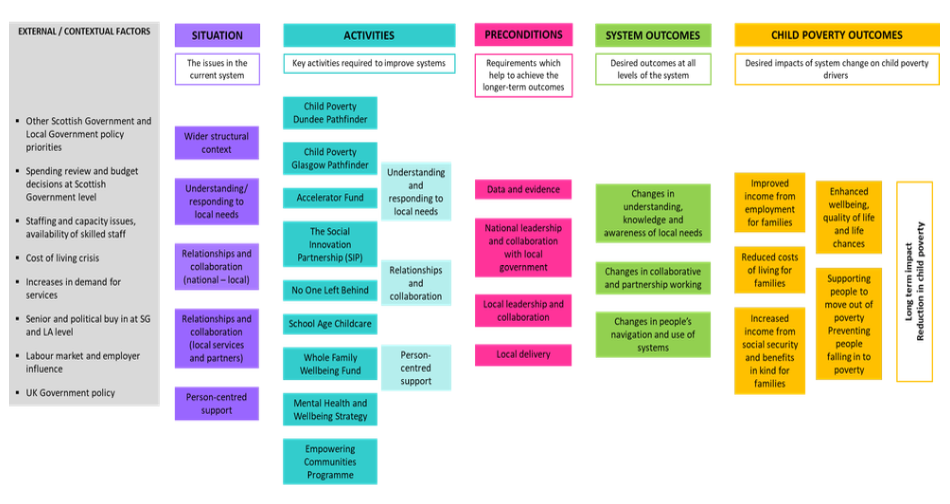Tackling Child Poverty Delivery Plan 2022-26: Logic model towards system change in the child poverty context
This report represents the first assessment of system change in the child poverty system. This report aims to identify and understand the range of approaches taken to system change and person-centred support in local child poverty systems.
A theory of change for system change
There are a series of assumptions that frame the approach taken to develop the theory of change for system change in the child poverty context.
This theory of change and its associated work focuses on the macro and meso level processes of system change in public services. It identifies how services can become more aligned and connected in their thinking in order to tackle child poverty. Furthermore, the theory of change aims to align how we can optimise the system, in order to give families the best change at getting the support they need.
The document is intended to support policy makers to identify barriers and facilitators that families experience when navigating the system.
System change should not be viewed as a linear process. It can be complex and activities can be interconnected. This theory of change has been developed on the understanding that it takes time to create system change and a whole system approach is required to make that change.
This theory of change is best viewed alongside the evaluation framework on child poverty, which outlines how individual policies and interventions can evidence their contribution to tackling child poverty.

Contact
There is a problem
Thanks for your feedback